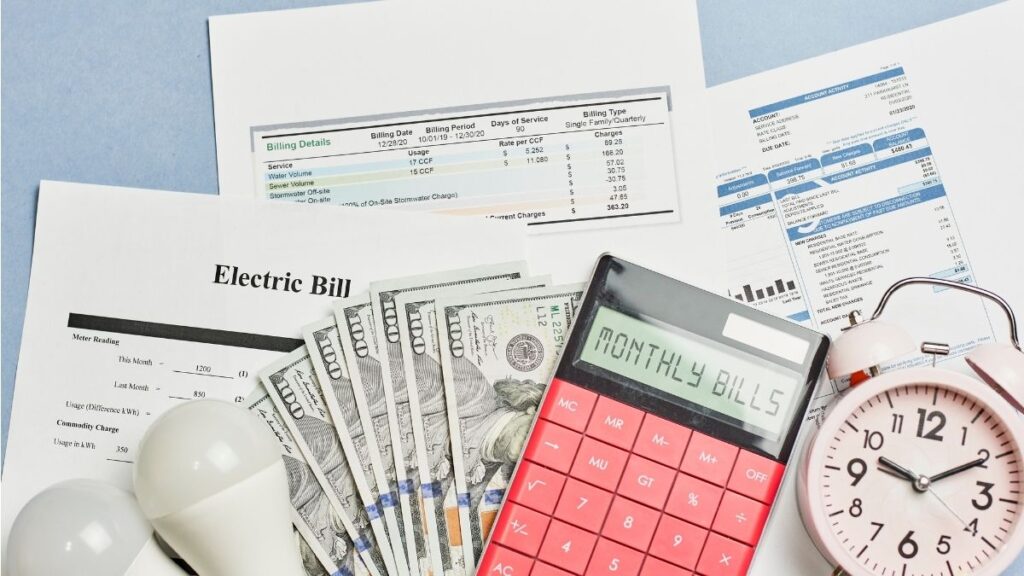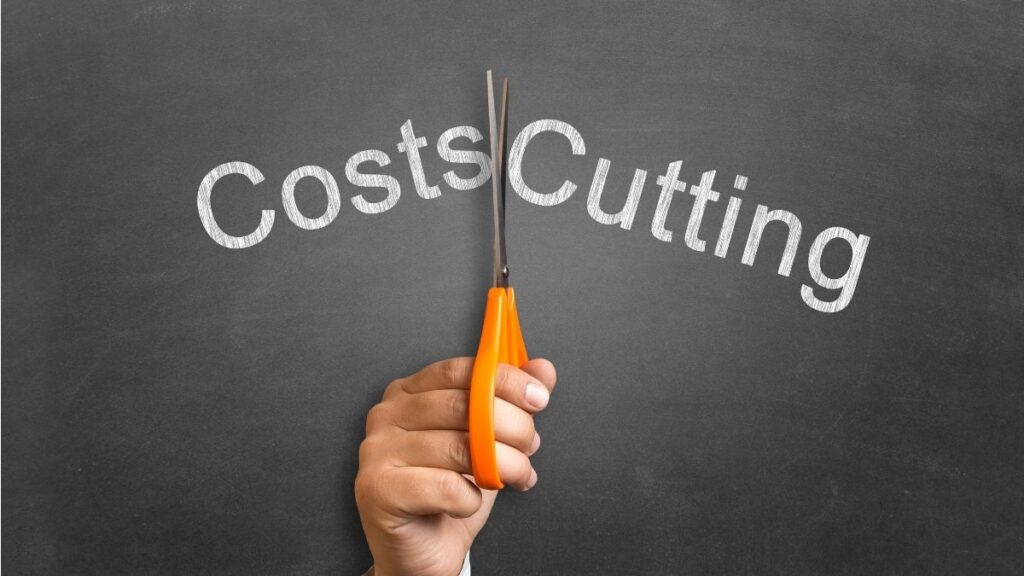
What if I told you that saving $7,000 in just 6 months doesn’t require eating ramen for every meal or canceling your Netflix subscription? Most saving advice feels restrictive and unsustainable, leading people to quit their financial goals within weeks.
Here’s the truth: realistic money saving strategies exist that let you save money without feeling deprived. With 40% of Americans having at least one savings goal for 2025, it’s time for a smarter approach.
This guide reveals 10 proven strategies to help you save $1,167 per month ($39 per day) while maintaining your lifestyle. Your $7000 in 6 months journey starts here.
How to Save $7,000 in 6 Months: 10 Proven Money-Saving Strategies That Actually Work
Your rent went up. Gas prices are crazy. Everything costs more than it used to. And you’re sitting there wondering how you’ll ever save enough money for that emergency fund, vacation, or whatever goal you have in mind.

Here’s the truth: Saving $7,000 in 6 months isn’t about making huge sacrifices. It’s about making smart moves that add up fast. We’re talking about strategies that can save you $1,000+ every single month without completely changing your lifestyle.
Let’s break down exactly how to do it.
1. Automate Your Savings Before You Can Spend It
This is the most important step. If you wait until the end of the month to save what’s left, you’ll save nothing. Why? Because there’s never anything left.

Set up automatic transfers on payday. The money moves from checking to savings before you even see it. This is called “pay yourself first” budgeting, and it follows the 80/20 rule: Save 20% of your income immediately, then live on the remaining 80%.
The best apps for automation are Chime, Dave, and Tilt. Tilt uses AI to look at your income and expenses, then automatically moves money into savings when your budget allows. It’s like having a smart assistant who knows exactly when you can afford to save more.
Here’s what you need to do right now:
- Open a high-yield savings account earning 4%+ APY
- Set up automatic transfers for every payday
- Start with whatever amount feels comfortable, even if it’s just $50
If you’re aiming to save $7,000 in 6 months, that’s about $1,167 per month. But don’t panic – the other strategies below will help you find that money without feeling broke.
2. The Painless Subscription Audit (Save $200+ Monthly)
Most people have no idea how much they spend on subscriptions. The average household has 12+ subscriptions they forget about. That gym membership you never use. The streaming service you signed up for one show. The app that auto-renewed last month.

Americans spend an average of $151 per month on impulse buys alone. That’s $1,812 per year on stuff they didn’t even plan to buy.
Use apps like Rocket Money to track all your subscriptions in one place. It will show you exactly what you’re paying for and when each service renews.
Here’s your action plan:
- Cancel anything you haven’t used in the last 30 days
- Keep only essential services
- For services you’re keeping, call and negotiate better rates
Most companies would rather give you a discount than lose you completely. Just ask: “What’s the lowest rate you can offer me to stay?”
Even saving $100 per month on subscriptions adds up to $600 over 6 months. That’s almost 10% of your $7,000 goal.
3. Smart Grocery Shopping (Save $150-300 Monthly)
Food is probably your second-biggest expense after housing. The average household spends $504 per month on groceries. Some spend over $1,000.

But here’s what most people don’t know: You can cut your grocery bill by 25-30% with just a few simple changes.
Meal planning saves 25-30%. Spend 15 minutes every Sunday planning your meals for the week. Make a shopping list and stick to it. No more wandering the aisles buying random stuff.
Generic brands save 20-25%. Store brands are often made in the same factories as name brands. The only difference is the packaging.
Use cash-back apps and store loyalty programs. Apps like Ibotta, Checkout 51, and your store’s app can save you 5-15% on groceries you’re already buying.
Buy non-perishables in bulk. Things like toilet paper, cleaning supplies, and canned goods are cheaper when you buy bigger quantities.
If you’re spending $600 per month on groceries now, these changes could save you $150-200 per month. Over 6 months, that’s $900-1,200 saved.
4. The Side Hustle Boost (Earn $300-500 Extra Monthly)
Sometimes the fastest way to save more is to earn more. And you don’t need to quit your day job to make an extra $300-500 per month.

Gig economy opportunities like DoorDash, Uber, or Instacart let you work when you want. Even 10 hours per week can bring in $200-400 monthly.
Online freelancing is perfect if you have skills in writing, design, tutoring, or social media. Websites like Upwork and Fiverr make it easy to find clients.
Sell unused items around your house. That exercise equipment, old electronics, and clothes you never wear could be worth hundreds of dollars.
Skills-based services like pet sitting, house sitting, or cleaning can pay $15-30 per hour in most areas.
Dave’s app has a Side Hustle feature that connects you to surveys and more than 1,000 flexible gigs and side hustles.
The key is picking something you can actually stick with. Don’t try to do everything. Pick one or two methods that fit your schedule and personality.
5. Energy Bill Optimization (Save $50-100 Monthly)
Your utility bills are one of those “set it and forget it” expenses. But small changes can add up to big savings.

Install a programmable thermostat. Set it to automatically adjust when you’re not home. This alone can save 10-15% on heating and cooling costs.
Switch to LED bulbs. They use 75% less energy than regular bulbs and last 25 times longer. The upfront cost pays for itself in about 6 months.
Unplug devices when not in use. Electronics draw power even when they’re turned off. This “phantom load” can add $100+ to your yearly electric bill.
Compare utility providers if you live in a deregulated area. You might find rates 10-20% lower than what you’re paying now.
Basic weatherproofing like caulking windows and adding weatherstrips to doors can cut heating and cooling costs by 5-10%.
These changes might seem small, but saving $75 per month adds up to $450 over 6 months.
6. Transportation Cost Cuts (Save $100-200 Monthly)
After housing and food, transportation is usually your biggest expense. But there are lots of ways to cut these costs without getting rid of your car.

Gas-saving driving habits can improve your fuel efficiency by 10-40%. Avoid rapid acceleration, keep steady speeds, and combine trips when possible.
Regular car maintenance prevents expensive repairs and keeps your car running efficiently. Change your oil on time, keep tires properly inflated, and replace air filters regularly.
Carpooling and public transit can cut your commuting costs in half or more. Even using these options 2-3 days per week makes a difference.
Shop around for car insurance. Auto insurance premiums have been rising, but rates vary wildly between companies. Getting quotes from 3-4 insurers could save you $200+ per year.
Consider car-sharing services like Zipcar or Getaround if you don’t drive daily. For some people, this costs less than owning a car.
Transportation costs can easily add up to $300-500 per month between gas, insurance, and maintenance. Cutting this by even $125 per month saves $750 over 6 months.
7. The Strategic Credit Card Rewards Game
Credit cards get a bad rap, but used correctly, they can actually help you save money. The key word is “correctly.”

Only use cash-back cards on purchases you were already going to make. Groceries, gas, and utilities are perfect for this. Don’t buy extra stuff just to earn rewards.
Pay off your balance monthly to avoid interest charges. Credit card interest rates are usually 18-29% annually. That erases any rewards you might earn.
Use rewards for your savings goals. Instead of spending cash-back rewards, transfer them directly to your savings account.
Take advantage of sign-up bonuses for planned expenses. If you need to buy a new appliance or book a vacation, using a new credit card with a sign-up bonus can give you $200-500 back.
The average household could earn $200-400 per year in cash-back rewards just on regular spending. Put that money straight into savings.
8. Entertainment Without the Premium Price Tag
You don’t have to become a hermit to save money. You just need to be smarter about how you have fun.

Free community events happen everywhere. Check your city’s website, local Facebook groups, and community centers. Free concerts, festivals, and activities are more common than you think.
Your local library has way more than books. Many libraries lend movies, have free classes, and host events. Some even have tools and equipment you can borrow.
Happy hour specials can cut your dining and drinking costs in half compared to prime time prices.
Share streaming services with family members. Most services allow multiple users, so split the cost.
Group activities let you split costs. Game nights, potlucks, and hiking trips are fun and cheap when everyone contributes.
Americans spend around $1,000-1,200 annually on gifts alone, with about $900 of that centered on holidays. Being more thoughtful about gift-giving and entertainment can easily save $100+ per month.
9. The ‘Invisible’ Savings Method
This strategy works because you barely notice the money being saved. It’s perfect for people who struggle with traditional budgeting.

Round-up apps save your spare change automatically. Chime rounds up every debit card purchase to the nearest dollar and puts the extra change in savings. Buy a $3.50 coffee, and $0.50 goes to savings.
The $5 bill savings challenge means every time you get a $5 bill, you save it instead of spending it. Most people save $300-500 per year this way without thinking about it.
Automatic savings from cash-back rewards. Set your credit card and shopping apps to automatically transfer cash-back to savings instead of statement credits.
Save windfalls immediately. Tax refunds, bonuses, gift money, and any unexpected income goes straight to savings before you can spend it.
These invisible methods might only save $50-100 per month, but they require zero willpower. And they add up to $300-600 over 6 months.
10. The Power of ‘Loud Budgeting’ and Social Accountability
“Loud budgeting” means being open about your money goals and boundaries. It’s about practicing values-based decision-making and not being embarrassed about saving money.

Set clear boundaries with friends and family about spending. “I’m saving for a goal right now, so I’m not doing expensive dinners this month.” Most people respect honesty.
Find accountability partners who share similar goals. Check in with each other weekly about progress.
Use social media to track progress if that motivates you. Share milestones and celebrate wins.
Create visual progress charts and put them somewhere you’ll see them daily. Seeing your progress keeps you motivated when temptation strikes.
The biggest benefit of loud budgeting is that it makes saying “no” to expensive activities easier. Instead of making excuses, you’re just being honest about your priorities.
Your $7,000 Savings Plan: Putting It All Together
Here’s how these 10 strategies can realistically save you $7,000 in 6 months:
- Automated savings: $400/month = $2,400
- Subscription audit: $100/month = $600
- Smart grocery shopping: $175/month = $1,050
- Side hustle income: $400/month = $2,400
- Energy bill optimization: $75/month = $450
- Transportation cuts: $125/month = $750
- Credit card rewards: $50/month = $300
- Entertainment savings: $75/month = $450
- Invisible savings: $75/month = $450
- Loud budgeting savings: $50/month = $300
Total potential savings: $8,150 in 6 months
You don’t have to do every single strategy perfectly. Even if you only implement half of these ideas, you’re still on track to save $4,000-5,000. And that’s way better than where you started.
The key is starting with just one strategy today. Set up that automatic transfer. Download a budgeting app. Cancel those unused subscriptions. Small actions create big results when you stick with them.
Your future self will thank you for taking the first step right now.






